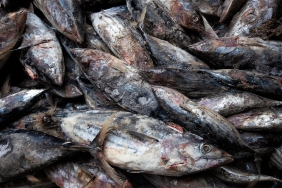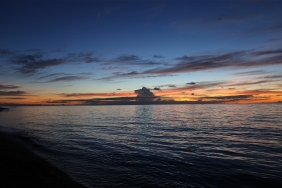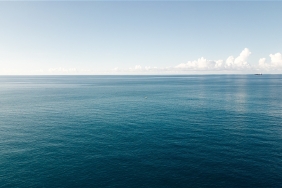THE CLEVER BOTTLENOSE DOLPHIN
By Amkieltiela
Dolphins are known to be the most intelligent and helpful marine animals. Who wouldn't be thrilled to have the opportunity to see dolphins in nature? It is not uncommon for people to forget to use their cameras because they are mesmerized by their beauty. These mammals usually live in groups of two to several hundred individuals depending on the species. These animals belonging to the order Cetacea can live up to 40-50 years and weigh up to 635 kg. Unlike fish, dolphin calves are born every 3-6 years with a gestation period of 12 months and a nursing period of 18-20 months. A Bottlenose dolphin can be said to be an adult when it is 5-13 years old for females while males are 9-14 years old. They use high-frequency sounds to catch their prey, namely benthic invertebrates (invertebrate organisms that live at the bottom of the water), fish, and squid.
Taxonomy :
- Kingdom: Animalia
- Filum : Chordata
- Class : Mammalia
- Ordo : Cetacea
- Family : Delphinidae
- Genus : Tursiops
- Species : truncatus
Bottle-nosed dolphins developed various methods to capture their prey in addition to the use of high-frequency sounds, one of which was the use of a sponge which is thought to have developed in the 19th century. sponge is placed on the rostrum (snout) to protect it from rocks, shells or other objects that could injure the snout. Once the prey is spotted, the sponge is released in order to catch the prey. But not all individuals apply this technique. The results of the Zurich University research team found that Bottlenose dolphins that utilize sponges as a tool to hunt food, hereafter called spongers, have different types of food than those that do not utilize sponges, hereafter called non-spongers, despite living in the same habitat. Chemical analysis results show that spongers generally hunt bottom-dwelling prey.
Mann et.al (2008) proved that spongers and non-spongers do not compete for food because they have different targets and habits. Spongers generally live solitary lives, spend longer time on the seafloor, dive for longer time, and spend longer time foraging compared to non-spongers. These abilities do not affect reproductive success, but it is still unknown whether sponge use affects prey capture success. Further research is needed to prove this.
In order to conduct further research, this marine mammal, which is listed in appendix II of CITES, must be protected. The main threats to this species are incidental capture (bycatch), stranding (stranded) and habitat destruction by human activities. WWF-Indonesia conducts conservation efforts in collaboration with local communities, local and regional governments to support the establishment of marine protected areas, sustainable economic development, stop bycatch by fishermen, collect dolphin data through incidental observations as well as bycatch, and improve overall coastal and marine resource management mechanisms. WWF-Indonesia has also developed guidelines for handling stranded marine mammals in Indonesia, and is supported by a report from WWF entitled "Reducing Impacts of Noise from Human Actions on Cetaceans: Knowledge Gap Analysis and Recommendations".
References :
Bardo, M., 2012. Dolphin 'sponging' Spans Centuries.
Garber, M., 2014. The Dolphins Are Using Sea Sponges as Tools.
Mann, J. et al., 2008. Why Do Dolphins Carry Sponges. PLoS ONE, Volume 3, pp. 1-7.NOAA, 2014. NOAA.





